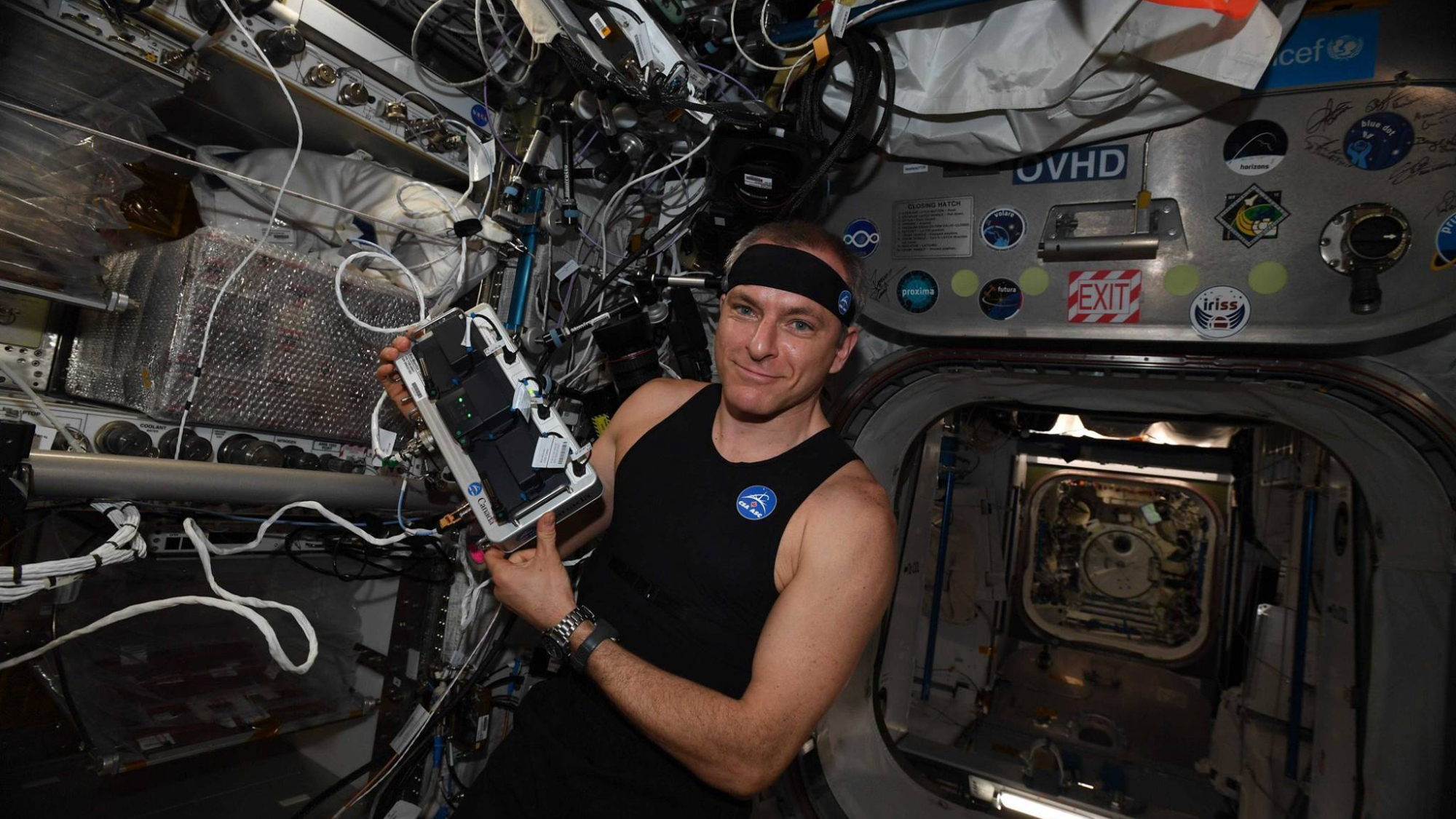
Smart undershirts and AI algorithms will help keep astronauts healthy on NASA's planned Lunar Gateway moon-orbiting space station.
The undershirts, made of a smart material known as Astroskin, have previously been tested on the International Space Station (ISS), but will require a redesign to make them fit for service in deep space, farther away from Earth.
Canadian company Hexoskin will design the wearable device as part of a contract announced by the Canadian Space Agency (CSA) on Nov. 26.
"The Lunar Gateway will be about 1,000 times farther away from Earth than the International Space Station, so there will be a lot of constraints in terms of cargo [and] communication, but also the radiation environment aboard the station," Pierre-Alexandre Fournier, Hexoskin co-founder and CEO, told Space.com.
"Radiation is a big factor when you design electronics, and we have to make sure that the components we will be using can withstand that high level of radiation," Fournier added.
Related: Astronaut suits up in 'smart' astroskin jersey on space station
During ISS missions, astronauts absorb anywhere between 50 to 2,000 millisieverts of ionizing radiation, equivalent to 150 to 6,000 chest X-rays, according to NASA. During a mission on or around the moon, the exposure could be up to one order of magnitude higher, according to the European Space Agency.
"We will have to identify the requirements for the new space station, but we also want to use this as an opportunity to update the product," Fournier said. "To improve the capabilities, the processing power, things like that."
The Astroskin wearable health monitor is made of the stretchable material elastane and fitted with six sensors that continuously monitor the astronaut's heart rate, blood pressure, oxygenation, skin temperature, activity level and breathing rate. The data is transmitted in real time to a computer app where AI algorithms analyze it for unexpected patterns and changes. The technology was first tested on the ISS in 2019 by Canadian astronaut David Saint-Jacques and has been worn by astronauts ever since.
"The nice thing about having a shirt that covers the whole upper body is that you have access to all the surface around the torso where the vital signals can be measured," said Fournier. "It makes it very comfortable. You don't need to stick any adhesive sensors anywhere. Everybody is wearing clothes every day, so a smart garment is a very natural thing to use."
The CSA said in a statement that the new device will "fit into astronauts' daily routines during missions in the lunar environment" and "collect valuable data about how astronauts' bodies respond to the unique conditions of lunar orbit."
Fournier expects that the smart undershirt could make it to the Lunar Gateway at some point in 2028 or 2029, most likely with the first batch of astronauts to visit the new outpost as part of the Artemis 4 mission.
Lunar Gateway is expected to begin construction in 2027 when its first two modules — the Power and Propulsion Element and the Habitation and Logistics Outpost — will be launched aboard a SpaceX Falcon Heavy rocket.
Hexaskin originally launched the product in 2009 with the aim to apply AI and data-driven approaches to preventative healthcare. They hoped the technology would help medical researchers studying chronic conditions such as cardiac and respiratory diseases.
"Our goal was to develop things for everyone that needs medical attention on Earth," said Fournier. "It's still our focus today."
The company won a contract to create a bio-monitoring device for astronauts in 2011 and has since tested it in various settings. In addition to astronauts on the space station, the Astroskin undershirt has been used in simulated Mars missions on Earth, in long-duration expeditions to Antarctica, and also to help other professionals in high-stress jobs such as first responders and pilots.
"The work we do in space is very valuable in terms of engineering," said Fournier. "It allows us to push the limits of what's possible in terms of product design, but then we take this technology and make it benefit all our other clients."







